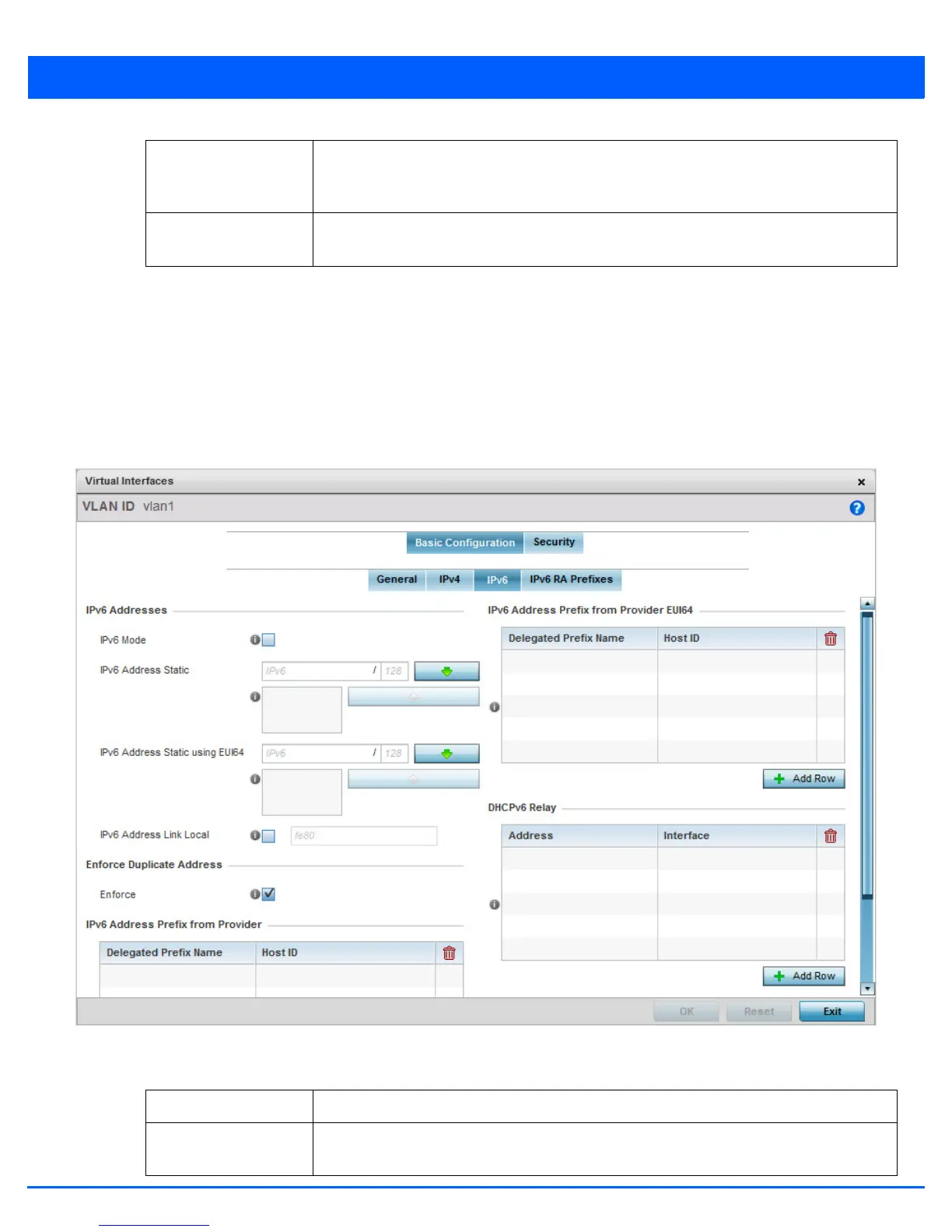Device Configuration 5 - 99
31. Select OK to save the changes to the IPv4 configuration. Select Reset to revert to the last saved configuration.
32. Select the IPv6 tab to set IPv6 settings for this virtual interface.
IPv6 is the latest revision of the Internet Protocol (IP) designed to replace IPv4. IPV6 provides enhanced identification and
location information for computers on networks routing traffic across the Internet. IPv6 addresses are composed of eight
groups of four hexadecimal digits separated by colons. IPv6 hosts can configure themselves automatically when connected
to an IPv6 network using the neighbor discovery protocol via ICMPv6 router discovery messages. When first connected to
a network, a host sends a link-local router solicitation multicast request for its configuration parameters; routers respond
to such a request with a router advertisement packet that contains Internet layer configuration parameters
Figure 5-60 Network - OSPF Virtual Interfaces - Basic Configuration screen - IPv6 tab
33. Refer to the IPv6 Addresses field to define how IP6 addresses are created and utilized.
Use DHCP to obtain
Gateway/DNS
Servers
Select this option to allow DHCP to obtain a default gateway address and DNS resource for
one virtual interface. This setting is disabled by default and only available when the Use
DHCP to Obtain IP option is selected.
Secondary Addresses Use the Secondary Addresses parameter to define additional IP addresses to associate with
VLAN IDs. The address provided in this field is used if the primary IP address is unreachable.
IPv6 Mode Select this option to enable IPv6 support on this virtual interface. IPv6 is disabled by default.
IPv6 Address Static Define up to 15 global IPv6 IP addresses that can created statically. IPv6 addresses are
represented as eight groups of four hexadecimal digits separated by colons.

